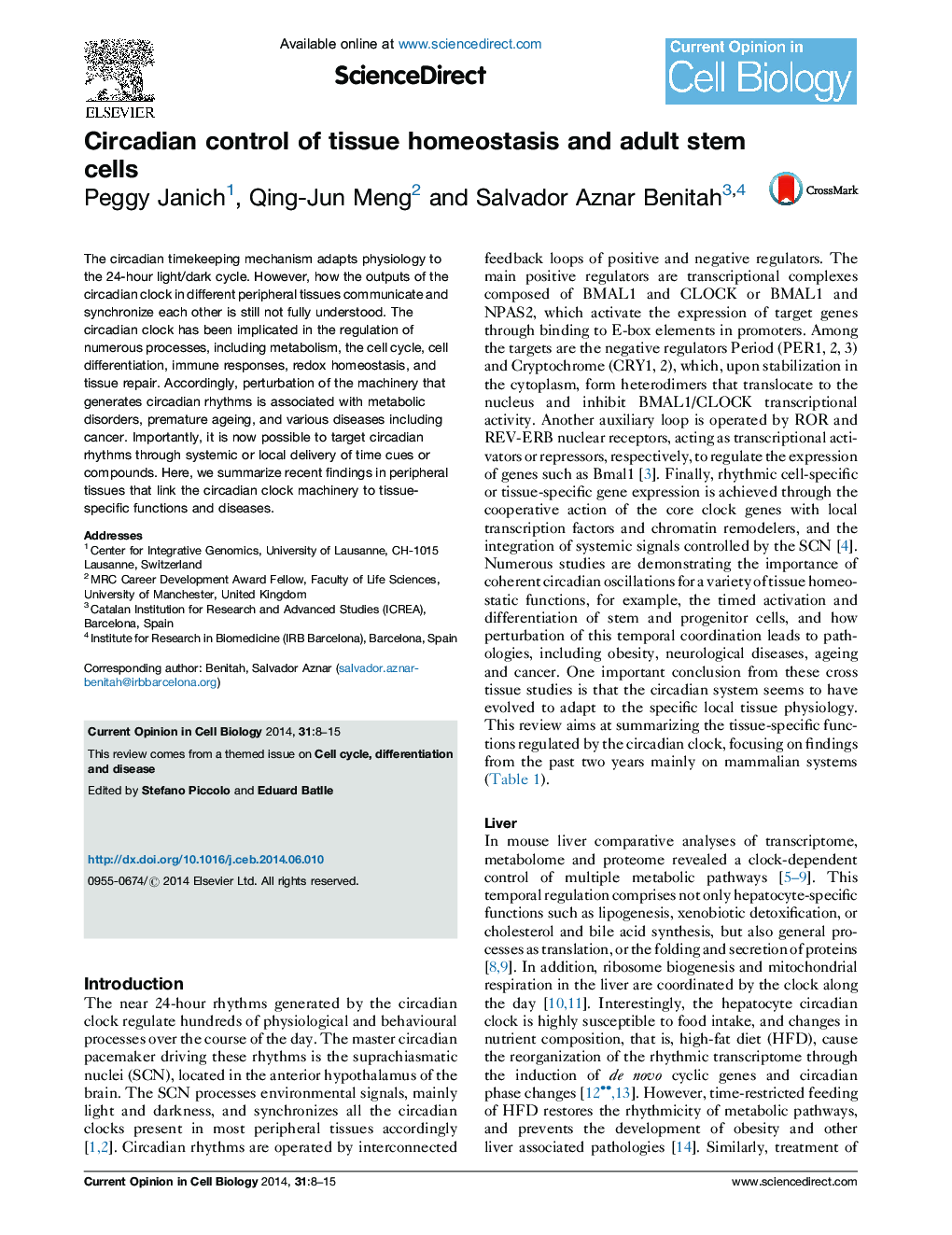| Article ID | Journal | Published Year | Pages | File Type |
|---|---|---|---|---|
| 8465726 | Current Opinion in Cell Biology | 2014 | 8 Pages |
Abstract
The circadian timekeeping mechanism adapts physiology to the 24-hour light/dark cycle. However, how the outputs of the circadian clock in different peripheral tissues communicate and synchronize each other is still not fully understood. The circadian clock has been implicated in the regulation of numerous processes, including metabolism, the cell cycle, cell differentiation, immune responses, redox homeostasis, and tissue repair. Accordingly, perturbation of the machinery that generates circadian rhythms is associated with metabolic disorders, premature ageing, and various diseases including cancer. Importantly, it is now possible to target circadian rhythms through systemic or local delivery of time cues or compounds. Here, we summarize recent findings in peripheral tissues that link the circadian clock machinery to tissue-specific functions and diseases.
Related Topics
Life Sciences
Biochemistry, Genetics and Molecular Biology
Cell Biology
Authors
Peggy Janich, Qing-Jun Meng, Salvador Aznar Benitah,
